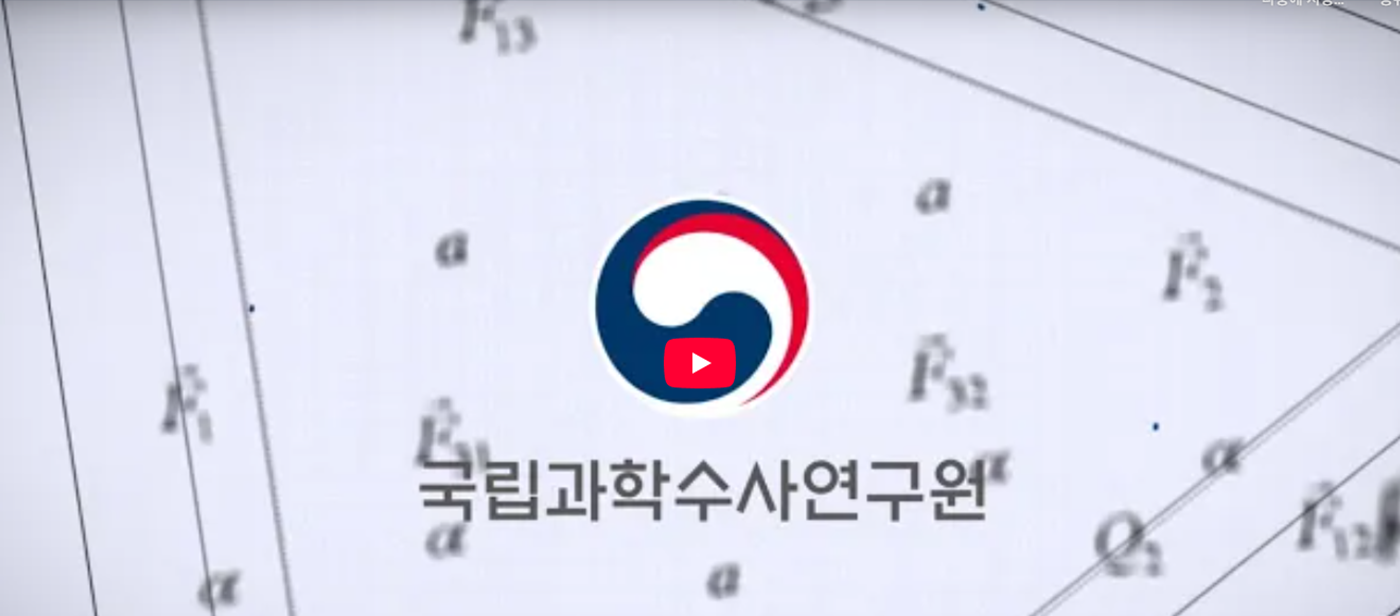

National Forensic Service
Promotional Videos
- THE POWER OF SCIENCE TO REVEAL THE TRUTH -
-

Mission
Provide top-quality forensic science services -
-
Establishinga high-quality Forensic Assessment system
-
Leadership in global forensic science
-
Public trust, employee well-being, and customer satisfaction
-
-

Vision
Forensic science institution that leads the world with the trust of people -
-
Trust
Transparent, precise, and speedy Forensic analysis
-
Expertise
Strengthening infrastructure to lead global forensic science
-
Customer
SatisfactionOperational Innovation to deliver customer-oriented results
-
Organization Chart
- National Forensic Service
-
-
Administration Support Division
-
Planning and Strategy Division
-
Training and R&D Center
-
Forensic Medicine
Postmortem Investigation Division
Forensic Medical Examination Division
-
Forensic Science
Forensic DNA Division
Forensic Toxicology Division
Forensic Chemistry Division
Forensic Narcotic Division
-
Forensic Engineering
Forensic Safety Division
Digital Analysis Division
Traffic Accident Analysis Division
-
Headquarters and Local Institutes
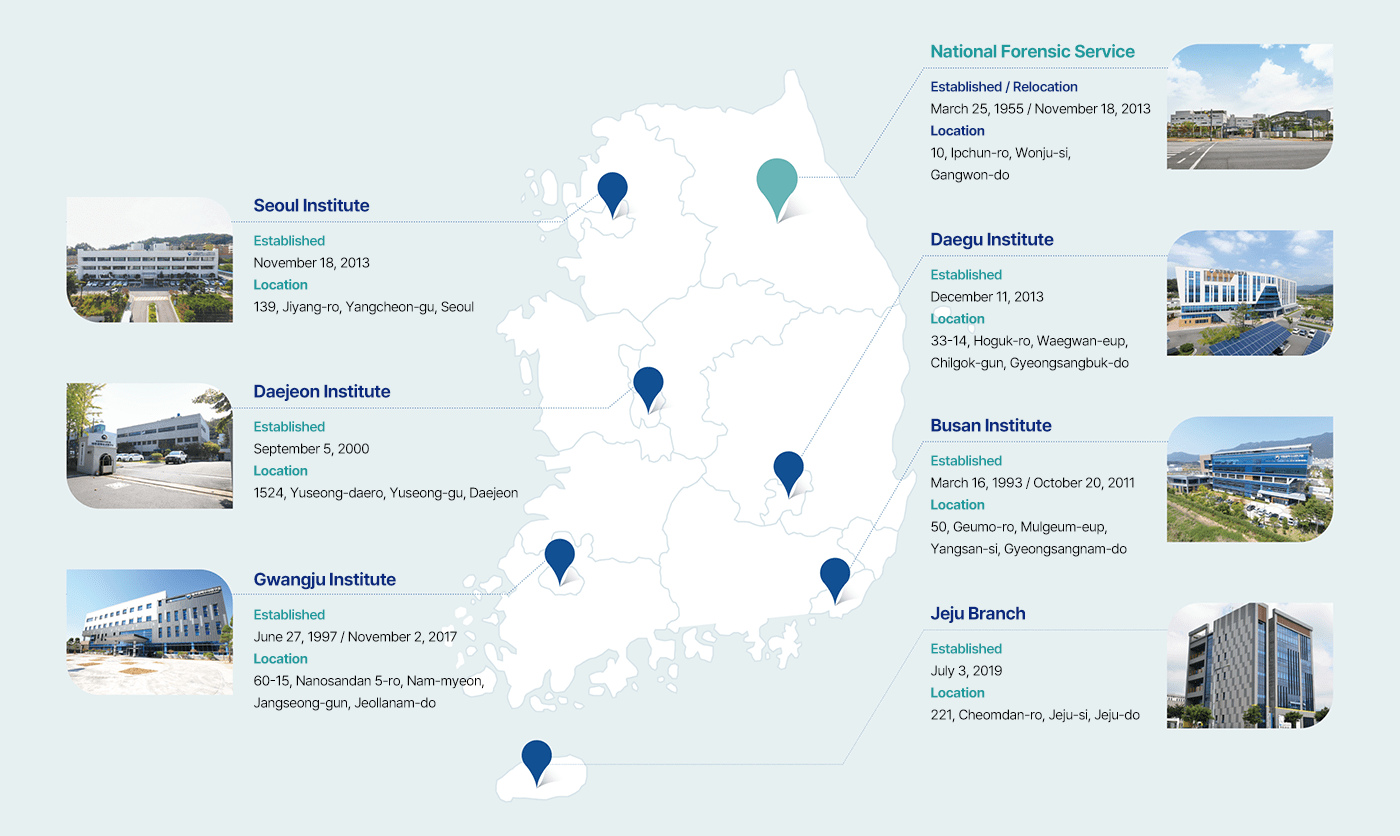
Introduction of National Forensic Service (NFS)
Revealing the truth behind hidden deaths Forensic Medicine Department
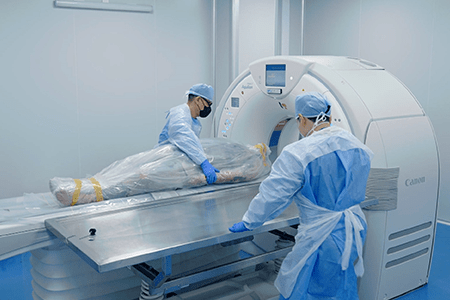
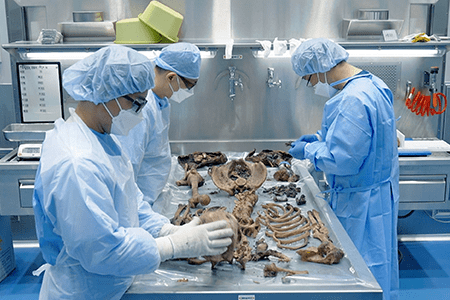

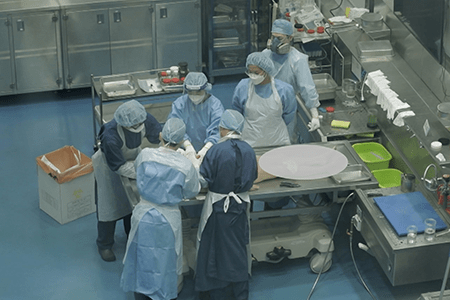
Revealing the truth behind hidden deaths Forensic Medicine Department
Postmortem Investigation Division
The Postmortem Investigation Division conducts postmortem inspections and autopsies in cases of unattended or suspicious deaths. The division also performs forensic odontological and anthropological assessments, which play crucial roles in death investigations, especially for identification of the deceased.
Forensic Medical Examination Division
The Forensic Medical Examination Division is responsible for conducting forensic imaging, pathological analyses, and diagnostic testing based on medico-legal evidence obtained during postmortem examinations. The division also applies psychological principles to meet the needs of the judicial system, contributing to the collection of crime-related information and advancing research in forensic psychology to support crime prevention.
Revealing the truth behind hidden deaths Forensic Science Department
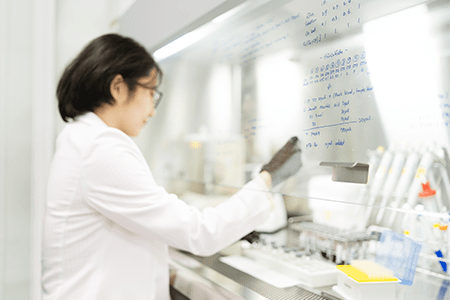
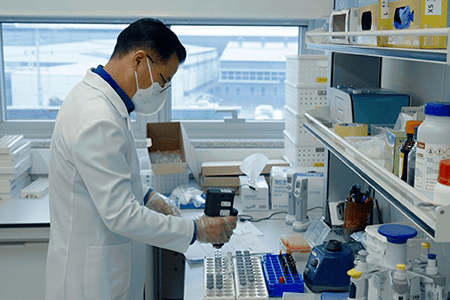
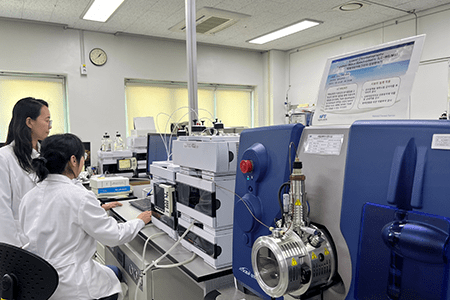
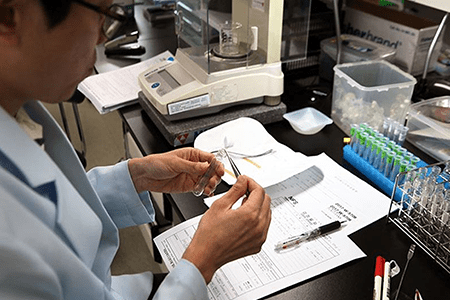
Revealing the truth behind hidden deaths Forensic Science Department
Forensic DNA Division
The Forensic DNA Division conducts DNA analysis for individual identification to help solve various criminal and cold cases. It operates the National DNA Database and the Missing Children Database in accordance with the law, and carries out identification of victims from mass disasters and historical incidents.
Forensic Toxicology Division
The Forensic Toxicology Division provides comprehensive toxicological analysis to support the resolution of incidents involving pharmaceuticals, poisons, illicit drugs, and hallucinogenic substances. The division analyzes various forensic specimens—including biological fluids, hair samples, and seized evidence—and conducts examinations of adulterated or substandard food products to address rapidly evolving crime trends.
Forensic Chemistry Division
The Forensic Chemistry Division conducts chemical analyses to support the investigation of various cases, including homicides, assaults, suicides, explosions, chemical leaks, terrorism, and poisoning. Through the identification of chemical substances in evidence, the division contributes to uncovering the causes of death and criminal activity. It also performs toxicological testing of biological specimens in cases involving driving under the influence (DUI), sexual assault, fraud, intimidation, and alcohol- or substance-related deaths.
Forensic Narcotic Division
The Narcotics Division conducts analytical examinations of controlled substances—including narcotics and psychoactive hazardous chemicals—in a wide range of biological specimens and on-site evidentiary materials. Furthermore, as an internationally accredited proficiency-testing provider and reference-material producer, the Division operates global reliability-certification programs. Through research and development initiatives such as identification of structure and metabolism of NPS, it continually adapts to the rapidly evolving crime environment.
Revealing the truth through traces left behind Forensic Engineering Department

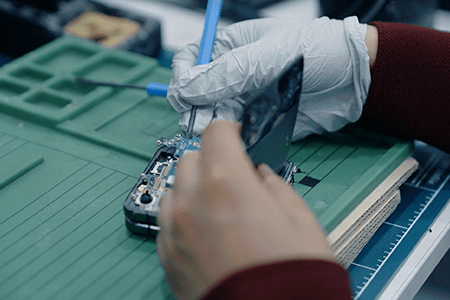


Revealing the truth through traces left behind Forensic Engineering Department
Forensic Safety Division
The Forensic Safety Division conducts scientific analysis and interpretation of incidents and accidents based on physics and engineering principles. Its responsibilities include forensic evaluations related to fire, explosions, falls, structural collapses, and asphyxiation, as well as criminal case analysis involving trace evidence, bloodstain patterns, firearms, and improvised explosive devices.
Digital Analysis Division
The Digital Analysis Division conducts research and analysis in the areas of digital forensics, video and audio data, digital biometric information, documents, artworks, and cultural assets. It also performs authentication of digital evidence and administers proficiency testing to enhance the reliability and competence of domestic and international forensic institutions.
Traffic Accident Analysis Division
The Traffic Accident Analysis Division conducts forensic analysis of traffic accidents, vehicle defect inspections, traffic-related crime investigations, and identification of vehicles in hit-and-run cases. Utilizing scientific and engineering expertise, the division employs advanced accident reconstruction software and specialized equipment to support accurate evaluations.
Lighting the future of the National Forensic Service Training and R&D Center
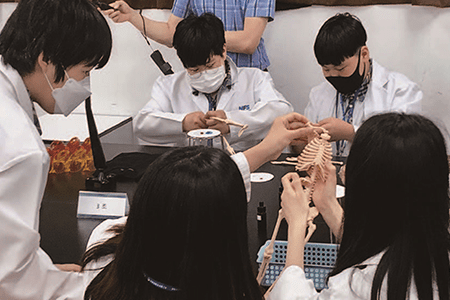
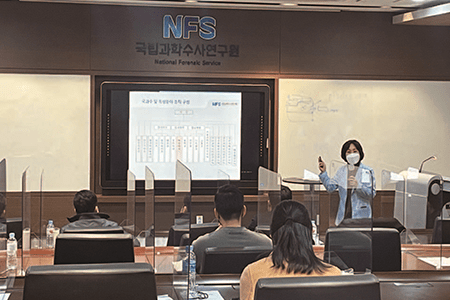
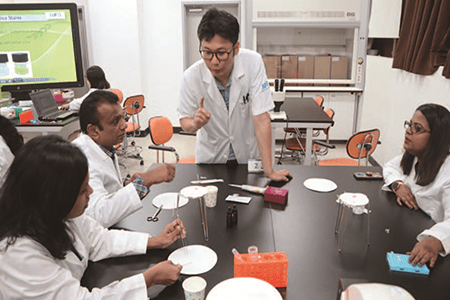

Lighting the future of the National Forensic Service Training and R&D Center
The Training and R&D Center provides internal training programs to enhance the expertise of NFS personnel, as well as external training for investigative agencies such as the police and military. The Center also implements Official Development Assistance (ODA) projects to share Korea’s advanced forensic science systems with other countries, and actively builds cooperative networks with both domestic and international partner institutions.



